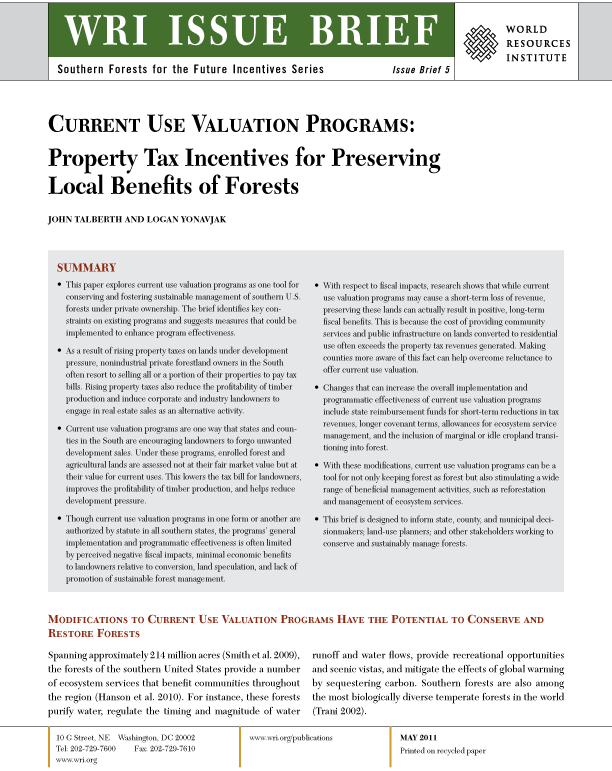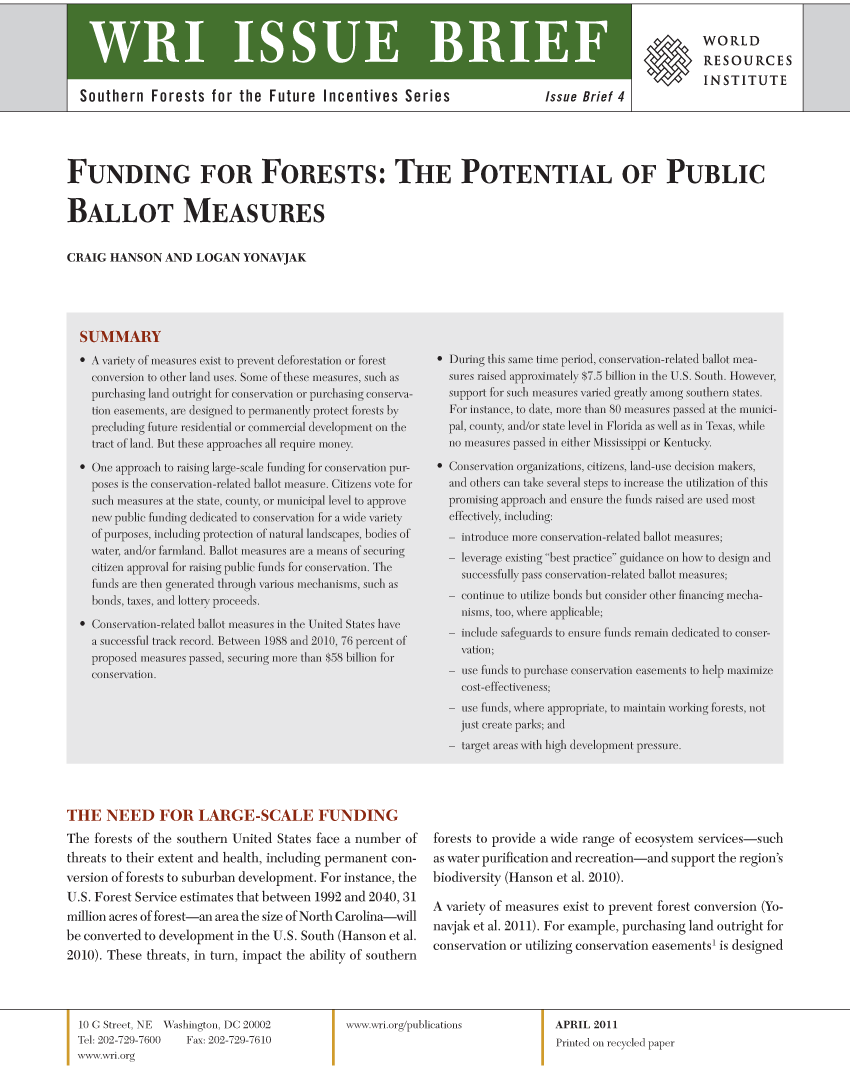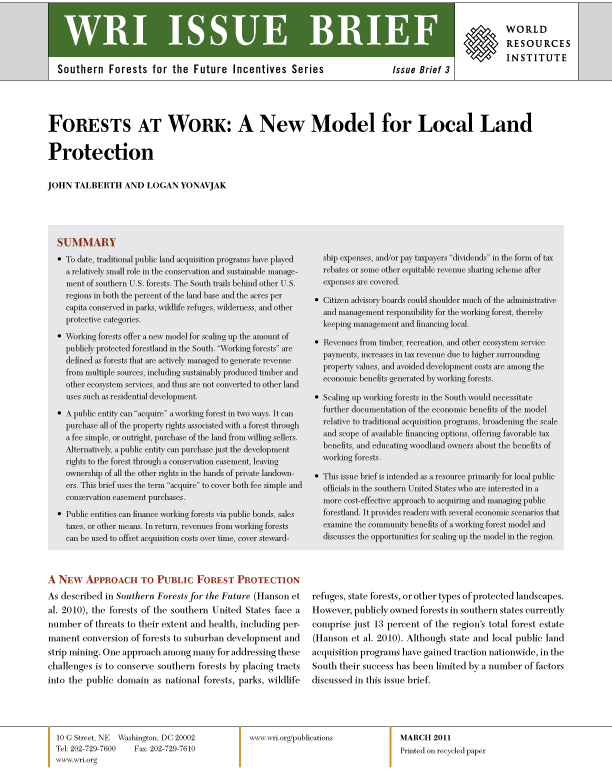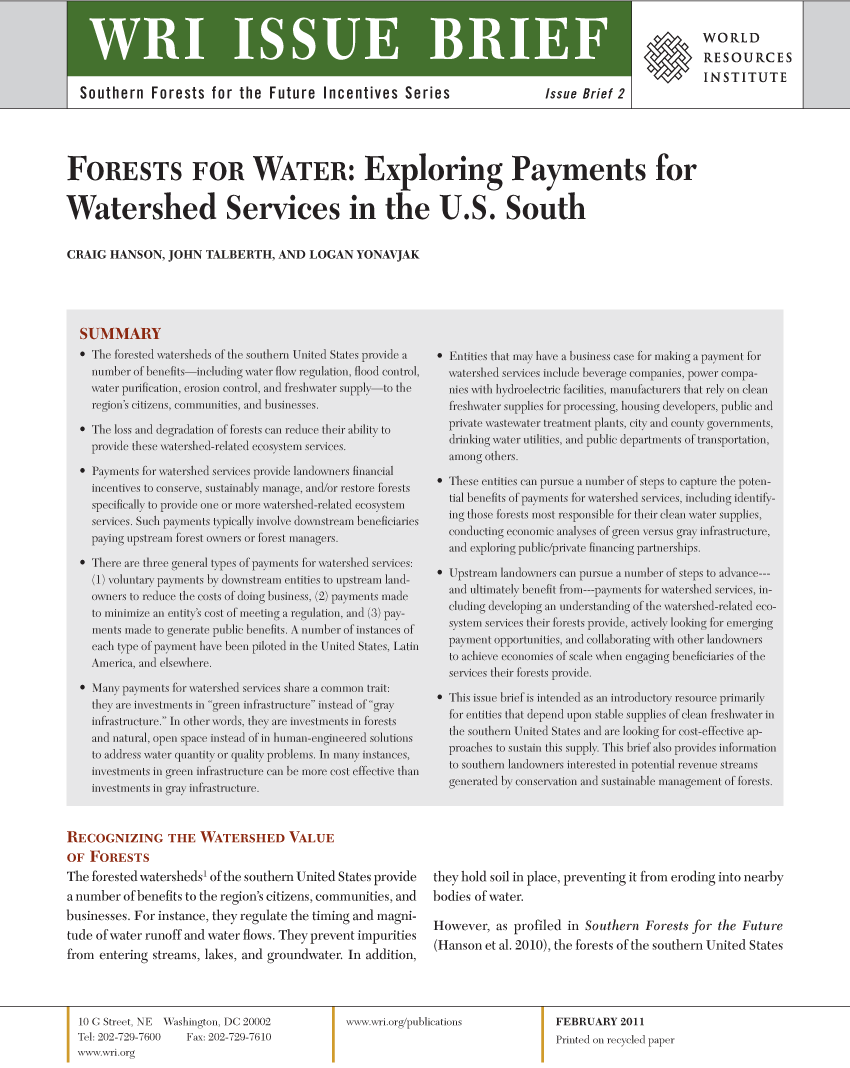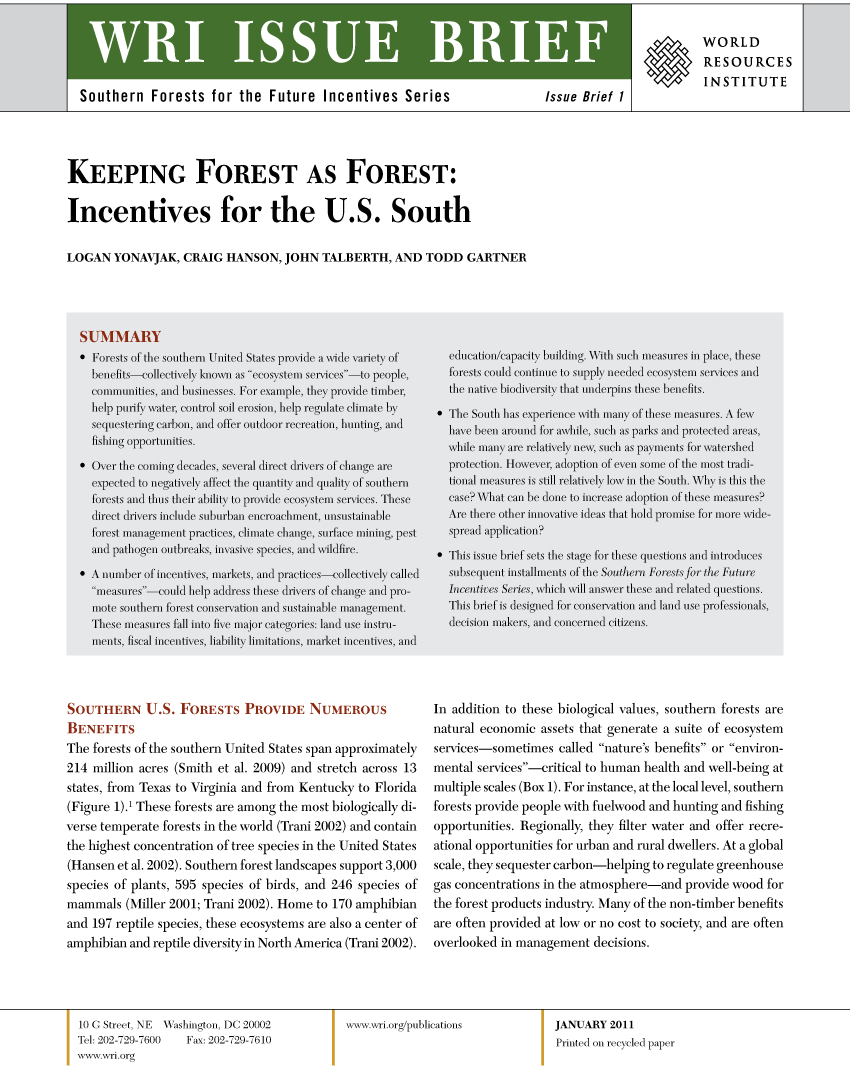 Overview:
Overview:
This issue brief provides an overview of incentives, markets, and practices — collectively called “measures” — that can promote conservation and sustainable management in the forests of the southern United States. These measures fall into five major categories: land use instruments, fiscal incentives, liability limitations, market incentives, and education/capacity building. With such measures in place, these forests could continue to supply needed ecosystem services and the native biodiversity that underpins these benefits.
Intended Audience:
Conservation and land use professionals, decision makers, and concerned citizens.




